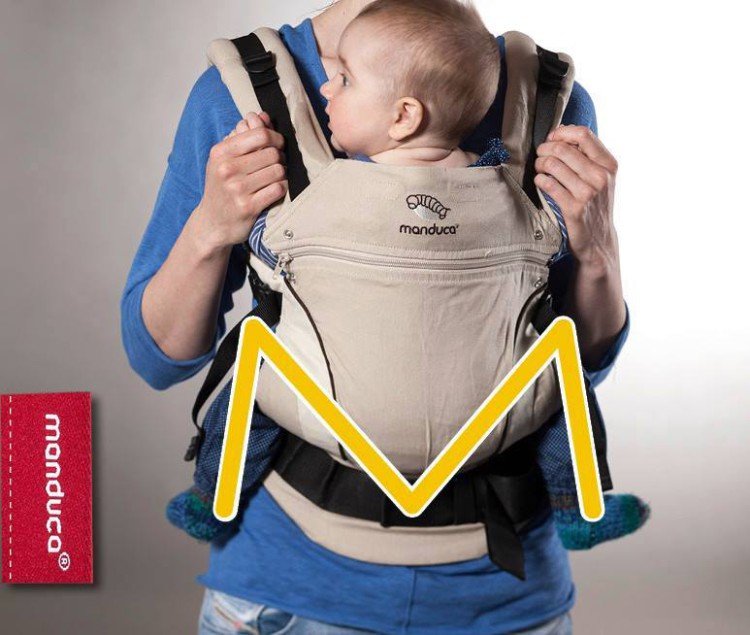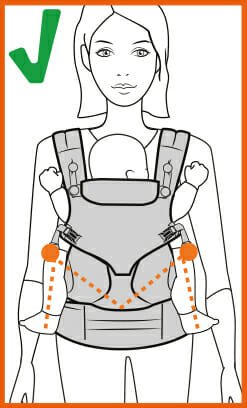Are baby carriers, slings and baby wraps safe for babies hips? Now this is a question I get asked all the time. Let’s start with some reassurance.
The most important thing to remember is that, in the vast majoreity of caes, it’s really very hard to damage your baby’s hips in any sling or carrier. So even if you’ve not been using the BEST carrier, please do not to worry.
Now when babies are born, they’re usually put through some checks (in the UK at least) for what gets commonly referred to as clicky hips. If your baby does have an underlying hip condition like hip dysplasia, (which is usually genetic – i.e. it runs in families so you’re reasonably likely to know about it) then it’s particularly important you carry your babies in an optimum position. Essentially for most other people, it’s just not anything to worry about.
For more information on hip displasia, do visit https://hipdysplasia.org/
So what is optimal hip positioning in a baby carrier? What makes a baby carrier good or bad for babies’ hips?
Ideally, in whatever sling or carrier you’re using, you should ensure that your baby (so this is newborns up to walking age), is supported so that their knees are positioned slightly higher than their bum.
What we’re looking is what we call an M position (you’ll see this in my video below). So the M goes from the foot to the knee, down to the bum, up to the knee, down to the bum again. So it’s a nice sort of spread squat position. With those knees nice and high and without your child’s legs dangling down in a straight line.
If you’re out and about you likely will see lots of babies in carrier with their legs dangling. That’s because lots of cheap baby carries, and carriers that have been around for a long time like the older BabyBjorn carriers, have very narrow bases that only cover babies’ crotches, rather than the whole of their seated width from one knee to the other
There are two issues with these narrow bases carriers – including Chiccos and those suspicious cheap £15 buckled baby carriers on Amazon and from Aldi.
Number one: It’s not the ideal position for your babies to be developing healthy hips. This ideal M position is the ideal position for babies’ hip joints – which aren’t yet fused when they’re born – to grown into the correct position.
The legs-hanging-down-position looks a bit more ‘normal’. I get that. It looks like how an adult would stand. But babies’ skeletons are not like adults’ and we do need to treat them quite differently.
In a baby wrap, this M position is really quite easy to achieve because you can spread the fabric nice and wide from one knee pit to the other, make sure the whole of their lower body is really well supported.
If you’re in a more conventional structured baby carrier, like an Ergobaby, a BabyBjorn, and Izmi Baby or a Tula for example, it’s really important to make sure you’re adjusting the width setting if you can so that your baby is always supported from one knee pit, across the whole of their seated width to the other.


If you’re in a carrier like a BabyBjorn Mini or classic, or some Infantino or Chicco carriers, you may find that your baby’s knees are getting further apart than the width of the carrier quite soon.
AT that point, the carrier is no longer optimal. That means no longer ideal for your baby and – important point number two – you’re also likely to start to feel your baby’s weight more on your back. If your baby’s legs are dangling like this, a lot of their weight is pulling away and down and putting a strain on your back, so you have to lean back to compensate.
So it’s another reason why at that stage it’s a good time to size up. Because the upper limit printed on the box of your baby carrier is not always going to be completely realistic.
Now, if you have got a more adjustable carrier, just remember to check for those markers on the waistband of your baby carrier (if it has them) and make sure that you’re growing and extending the size of the carrier to suit your baby.
So overall, the ‘hip thing’ is not something you need to worry about. Even if you have a child with an underlying hip condition and using a Pavlik harness, and we can still get them in a fantastic supportive baby carrier. Good baby wearing is fantastic for the whole of your baby’s anatomy and development.
NEED BABY CARRIER ADVICE? CHAT TO US!


 ⭐⭐⭐⭐⭐
⭐⭐⭐⭐⭐
